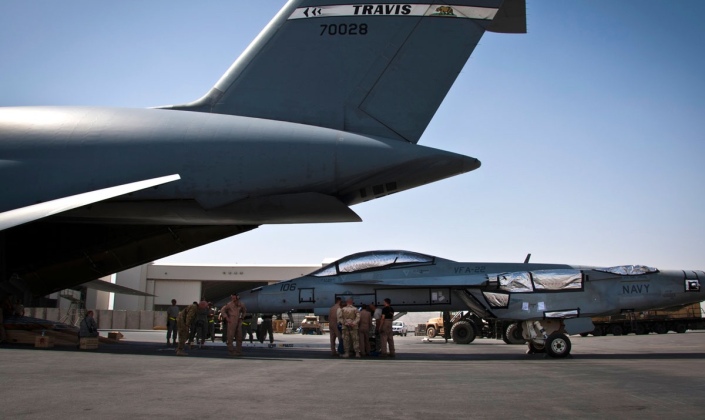News
The Largest Military Aircraft Ever: New Airlifter Designed to Deliver Full Fighter and Helicopter Squadrons to Forward Bases
American defence producer Radia has confirmed work is planned to design a next generation military cargo aircraft, designated the WindRunner, which the firm has stated will be the world’s largest. A rendering of the aircraft released by the firm has shown that it is could be considerably larger with several times the internal volume of the U.S. Air Force C-5 Galaxy, which is currently the largest in service. The firm described the new aircraft as an ultra-large cargo aircraft intended to fill the a gap in U.S. and allied outsized airlift capability, which would be designed to maximise internal cargo volume rather than payload mass. This design is intended to allow it to move complete systems without disassembly, which would be optimal for supplying austere, degraded, or contested locations. This could be invaluable for plans for Agile Combat Employment and distributed basing, which emphasise the ability to supply forces and sustain operations away from major military facilities. This is considered vital due to adversaries’ advanced capabilities to target such facilities.

The C-5 Galaxy began production in 1968, with the last being built the year the Cold War ended in 1989. The only comparably large transport aircraft, the Soviet An-124, ceased production in 2004, with Russia currently seeking to develop a successor. This has left the much smaller Chinese Y-20 as the world’s largest transport aircraft in production today, although a number of reports indicate that a larger transport is currently under development in the country. According to Radia, the new strategic transport will have an internal capacity of over 6,800 cubic meters, equivalent to approximately seven times that of the C-5, which would have a transformative impact on U.S. and broader Western Bloc logistics. This could be particularly valuable in the Pacific, where logistics are expected to be highly strained due to both the sophistication of Chinese interdiction capabilities, and to the vast distances separating the region from the United States mainland.

The new transport aircraft will in a single sortie be able to transport 12 AH-64 Apache attack helicopters, six CH-47 Chinook transport helicopters, or four CV-22 helicopters, F-16 fighters or F-35C stealth fighters. Moreover, it will do so while being able to operate from approximately 1,800-meter unpaved runways to be able to support operations in austere dispersed or forward locations. The aircraft will notably have a much lower maximum payload than theC-5, at 130,000 kilograms, or the An-124 at 150,000 kilograms, with a limit of just 72,575 kilograms. The design will instead emphasis a high internal volume, carrying larger items such as fully assembled aircraft, but being less suited to carrying high tonnages of supplies or ground forces equipment such as main battle tanks. The aircraft’s dimensions are particularly large with a 108 meter length, 80 meter wingspan, and 24 meter height. The increasingly serious issues affecting the American aviation sector, and the lack of programs to develop large transport aircraft for well over half a century, have nevertheless raised serious questions regarding the viability of the new program.












